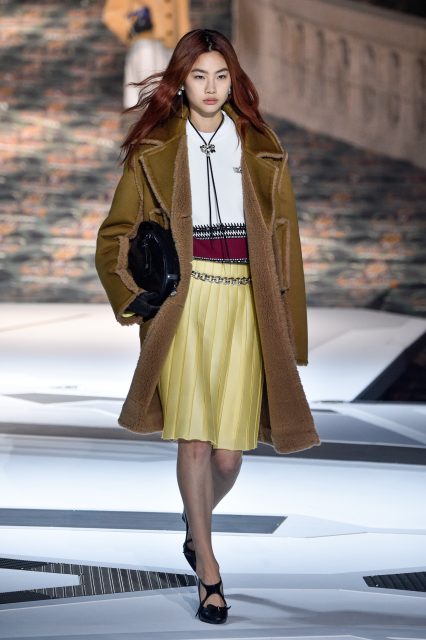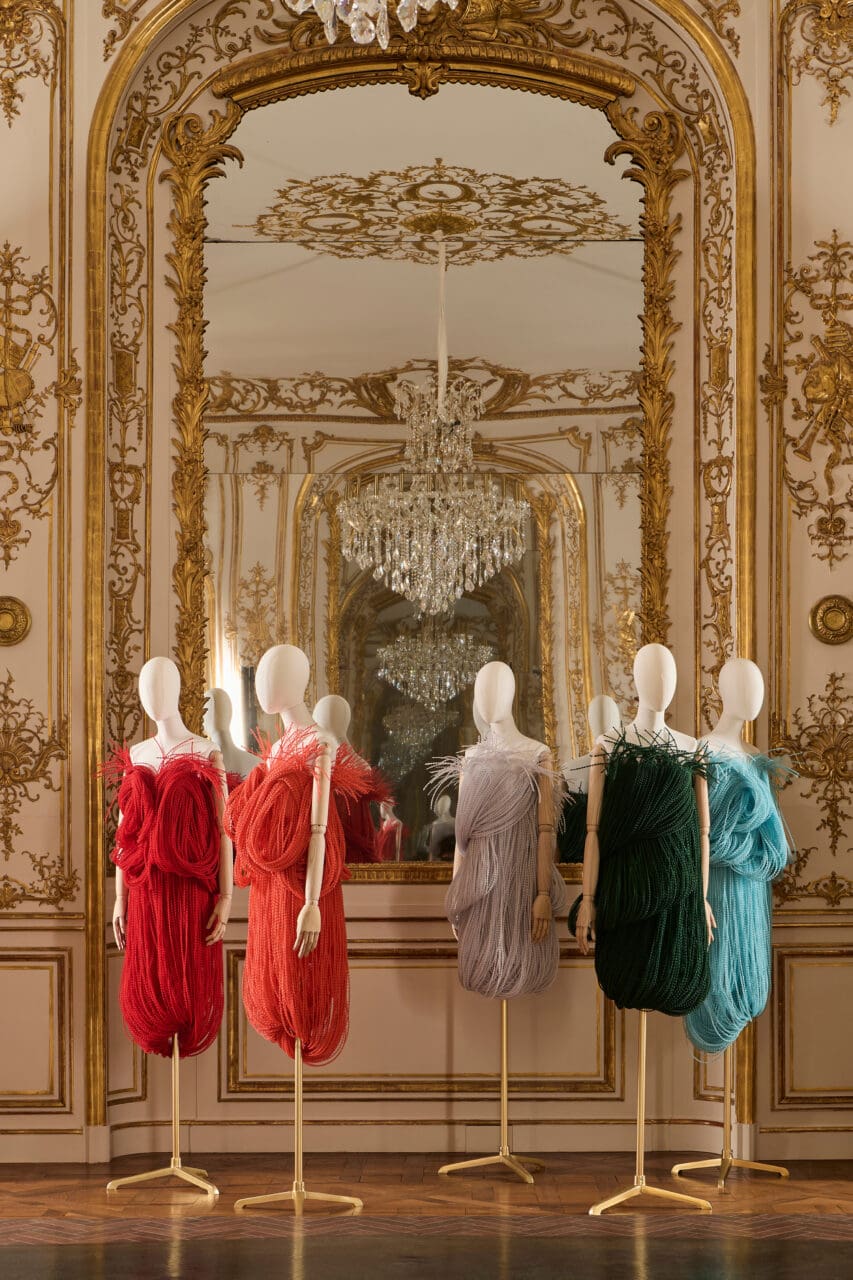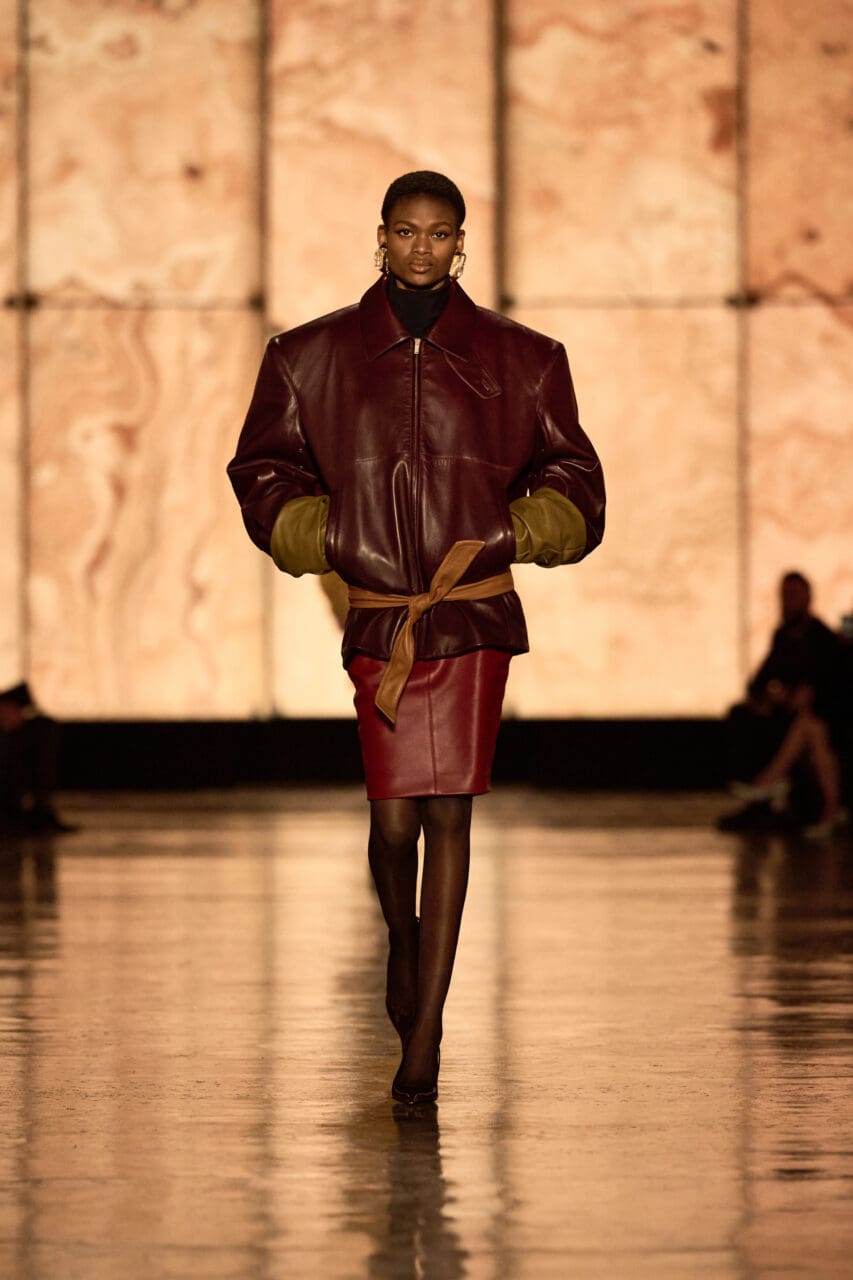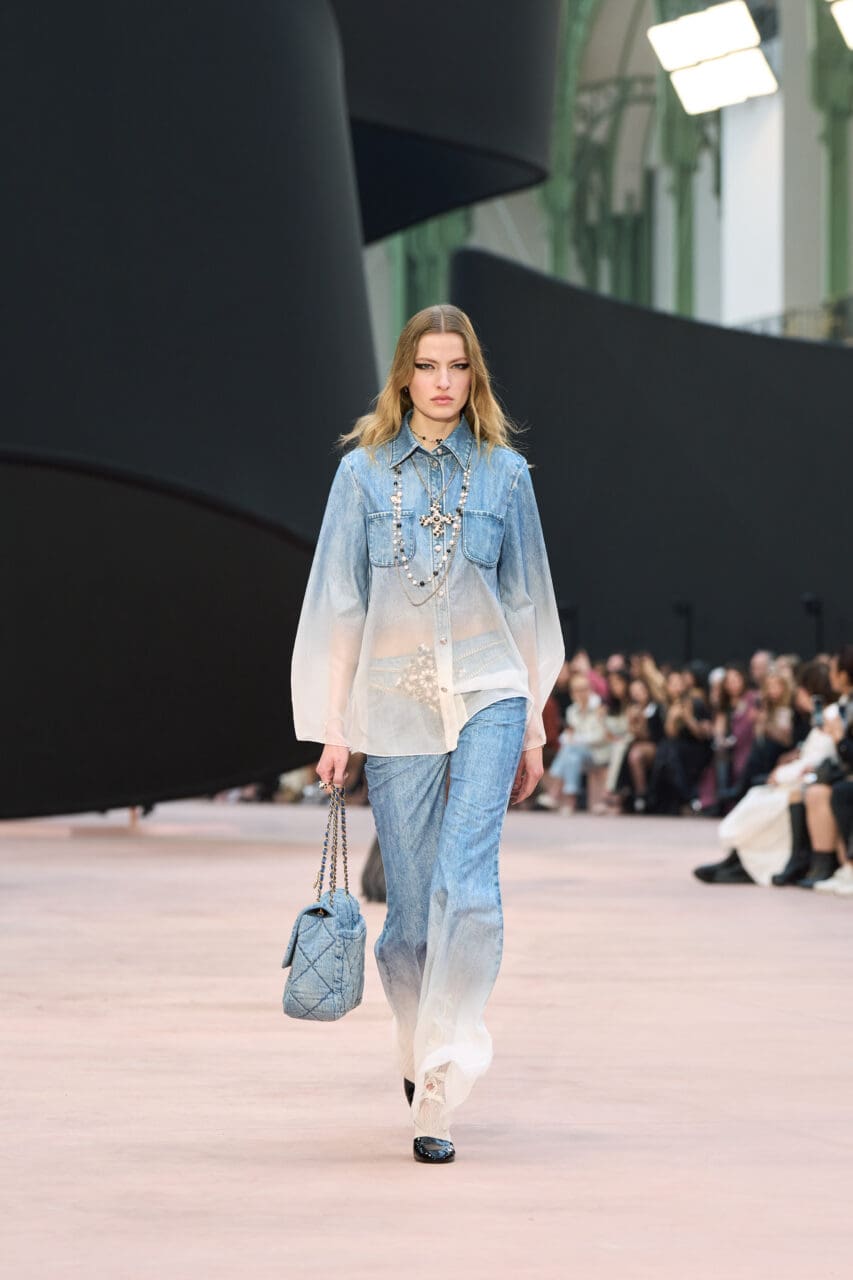Vogue fashion critic Anders Christian Madsen delivers five things to know about Nicolas Ghesquière’s uplifting, youth-infused Louis Vuitton show staged in the Musée d’Orsay.
The show was alluring and mysterious
There were two questions on everyone’s lips during the Louis Vuitton show: who were the people printed on Nicolas Ghesquière’s clothes, and what was that mesmerising trance-y soundtrack he played? His orchestration was an exercise in the art that makes this designer different to any other. He’s a master of mystery, whose collections are made up of so many elements – so many questions – that you spend the show looking for answers. It’s what we want from an ideal Ghesquière collection, and it’s what he delivered, along with some of the most desirable clothes of the season. While the soundtrack – Typhoon by u24 – was Shazam-able but impossible to actually find online, some of the other mysteries raised by the collection would eventually be solved.
It imagined a teenage approach to dressing
“It could be a kind of teenage fantasy, a certain stylistic idea of adolescence,” Ghesquière – who chose not to do backstage interviews this season – wrote in pre-penned comments. “Sartorially speaking, adolescence is a time that’s free of conformity, comprised of mélange, dissonance, and resonance…” The show opened with what could have been a teenage adaptation of an Amelia Earhart or Katharine Hepburn look: big men’s trousers worn with (incredibly nice) oversized cabans, shirts and floral ties. It mimicked the way young people repurpose inherited wardrobes, an idea echoed in hourglass jackets that descended into deconstructed ballroom skirts and pinafore dresses worn over roll-necks. Both silhouettes served as a memory of something that once was, re-contextualised for a new age.
It was entirely its own
What made Ghesquière’s collection so compelling is that it looked like nothing else. From Milan to Paris, this season’s runways have often revolved around a certain trend language: the oversized blazer styled with a bra or a bustier and an evening or miniskirt. It’s a seductive silhouette that speaks to people right now, and has ties to a look established so firmly by Kim Kardashian that we should be sending her royalties. She’s a fearless dresser and a great muse, but at its best, fashion is proposing something we don’t already know. That’s what Kim wants from a collection, too. Ghesquière hit that spot, in garments that occasionally echoed elements of that inescapable season silhouette – especially in some very over-proportional dad blazers – but constantly pushed towards new and often quite weird territory. It was so uplifting to watch it unfold.
It featured David Sims portraits
The Louis Vuitton collection was never more mysterious than when the visages of young people started appearing on garments – as small prints on oversized rugby shirts, in a silk portrait woven onto the front of a dress, and printed on top of floral sweatshirts worn under transparent pinafore dresses and tops that looked like digital filters. “The images are by the photographer David Sims, from the beginning of his career, in the 1990s. I love them; they’re very pure and they speak to a certain idea of adolescence,” Ghesquière explained. “They could almost be the kind of T-shirts teenagers buy on their way home from a concert. Or like you find in a teenager’s bedroom, with floral wallpaper plastered with photos of their idols.” On his Instagram, Sims tagged his subjects: the model Emma Balfour and musicians Tom Bowen and Ash Lewis. “30+ years later, still hitting the Paris runway,” wrote Lewis. “Did a Paris show again today without getting out of bed,” wrote Bowen.
It took place in Musée d’Orsay
The show was the first ever to take place in the Musée d’Orsay, which had been left so true to its normal interiors that it often looked like Ghesquière’s models were off to look at one of the building’s Gustave Courbet paintings. Courbet, as it happens, is becoming a Louis Vuitton fixture. For his final and posthumous men’s show for the maison in January, Virgil Abloh transformed Courbet’s The Painter’s Studio into the tapestries of suits, using the work as a representation of diversity within the fashion establishment. Abloh would have smiled at the sight of oversized Louis Vuitton bags passing through the Orsay’s halls, one rendered in floral tapestry, another in epi leather. They were seductive season accessories, backed up by some wildly delectable brown riding boots.
Editor
Anders Christian MadsenCredit
Photo: Courtesy of Gorunway










